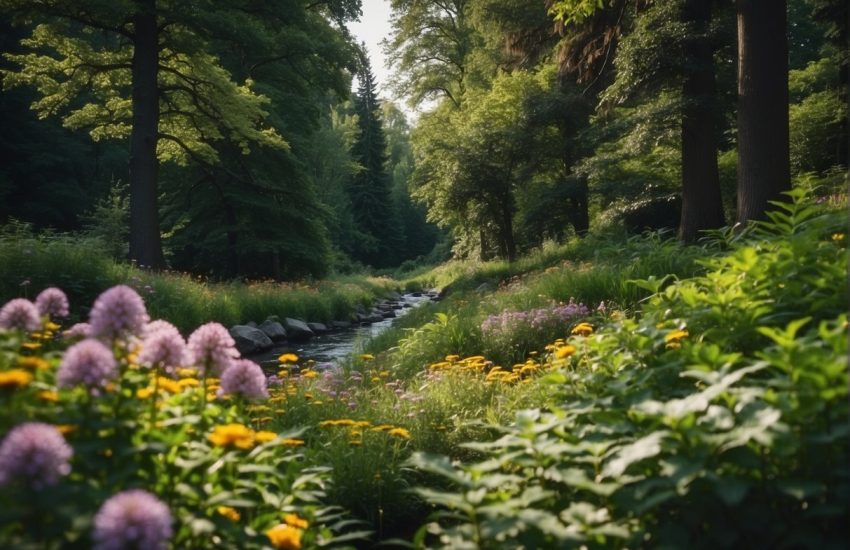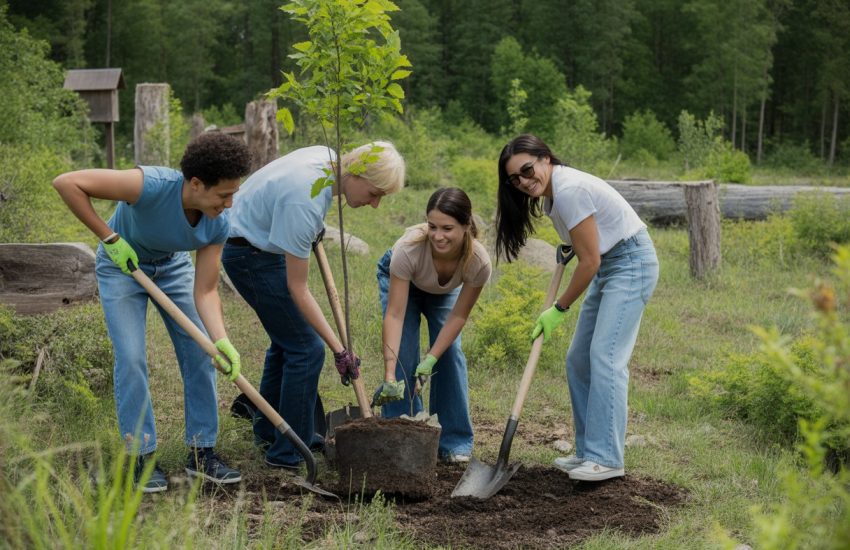Wildflower Meadow Planting Oklahoma Best Practices for Thriving Native Gardens
Planting a wildflower meadow in Oklahoma can turn an ordinary yard into a buzzing, colorful habitat. The best way to get started is to pick native wildflowers that really fit Oklahoma’s soil and climate—these guys just grow better and last longer.
Native species help out local pollinators and usually need less water and care than plants from somewhere else.
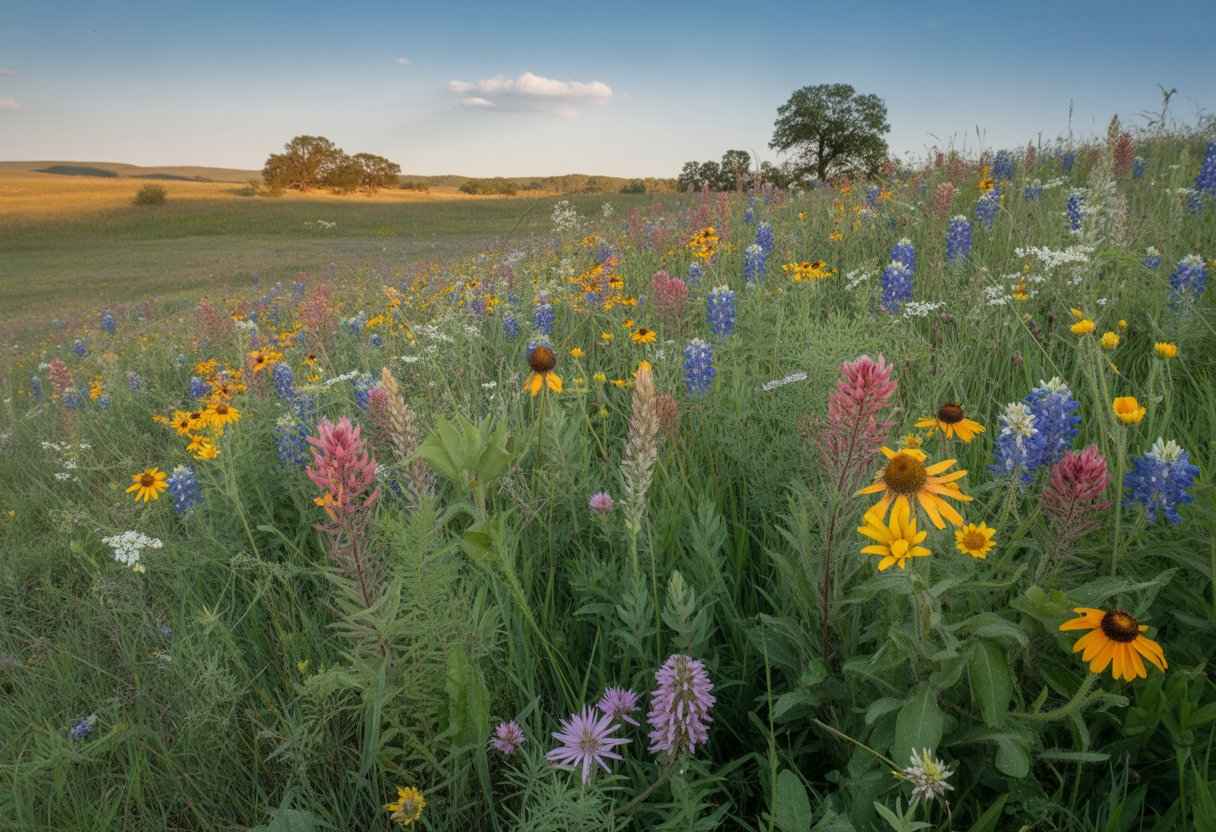
To get a wildflower meadow going, you’ll want to prep the soil, pick seeds that actually suit Oklahoma, and plant at the right time for the weather. This doesn’t just make your place look great—it’s also a win for local biodiversity.
Oklahoma’s environment is a bit unique, so that’s something to keep in mind. If you know which wildflowers work and what they need, you’ll avoid a lot of headaches and end up with a landscape that just keeps giving.
Planning a Wildflower Meadow in Oklahoma
Starting a wildflower meadow in Oklahoma means thinking carefully about which plants to pick, which seed mixes fit, and when to plant—especially around those unpredictable frost dates. If you plan well, you’ll get a landscape filled with wildflowers that actually belong here.
Selecting the Best Native Wildflowers
In Oklahoma, native wildflowers do a lot for pollinators and make for a tougher, more reliable meadow. Some favorites: purple coneflower, black-eyed Susan, and Indian blanket. They’re all pretty well-suited to the state’s soil and weather.
Blanket flower and purple prairie clover bring in extra color and help the ecosystem. Goldenrod and clasping coneflower keep things blooming even late in the season.
If you pick plants that flower at different times, you’ll have color for months and more habitat for wildlife. Non-native or invasive species? Just skip them—they can really throw things off.
Choosing Wildflower Mixes for Regional Success
Wildflower mixes made for Oklahoma or the Central Plains (think parts of Texas and Kansas too) are way better than generic blends. Look for ones with plains coreopsis, Mexican hat, and Indian blanket—these reflect the prairie vibe here.
The best mixes have a bunch of different native species, so you get both quick color and lasting growth. Good ones balance annuals and perennials for both instant and long-term results.
Oklahoma meadows usually get a lot of sun and the soil can be all over the place, so look for seed blends meant for “sunny, well-drained” spots. Deep-rooted species really help when it gets dry.
Understanding Planting Times and Frost Periods
Getting the timing right is huge for wildflower seeds in Oklahoma. The last frost usually hits sometime between mid-April and early May, but it really depends on where you are.
Plant in spring just after the last frost to keep seedlings safe. Or, go for late fall planting—then seeds can chill through winter and sprout in spring.
Fall planting is especially good for perennials like purple coneflower and purple prairie clover. If your mix has a lot of annuals, spring might be better for those.
Definitely check your local frost calendar before planting. It makes a big difference for how well your meadow gets established.
Site Preparation and Planting Techniques
You’ll want to pay attention to soil prep and planting techniques if you want your Oklahoma wildflower meadow to thrive. How you treat the soil, spread the seeds, and time everything can make or break your wildflower dreams.
Preparing the Soil for Wildflower Success
Start by clearing out whatever’s already growing—mow it down or use a non-residual herbicide. This gets rid of competition and opens up the soil for seeds.
Check your soil pH; wildflowers usually like it between 6.0 and 7.5. If you need to, add a bit of lime or sulfur to tweak things. Don’t go crazy with fertilizer—these plants actually do better in soil that’s not too rich.
Lightly till the soil down 2-4 inches to loosen it up, but don’t overdo it or you’ll bring up weed seeds. Finish by raking for a smooth, firm seedbed.
Spreading Methods and Seeding Rates
A seed spreader helps you get seeds out evenly, but if you’re working with a small patch, you can just toss them by hand. It’s not as precise, but it works.
Oklahoma wildflower mixes usually go down at about 10 to 25 pounds per acre. Stick to what your seed supplier suggests.
Mixing seeds with sand or something similar makes it easier to spread them evenly—especially the tiny seeds. If you spread seeds in two passes at right angles, you’ll get better coverage.
Planting Wildflower Seeds Effectively
The sweet spot for planting wildflower seeds in Oklahoma is late fall to early winter. That way, seeds get the cold they need and pop up strong in spring.
After you spread the seeds, lightly roll or press the soil so seeds make good contact, but don’t bury them more than ¼ inch. Too deep, and they might not come up.
Hold off on watering unless things are really dry—let the rain do its thing. Keep weeds in check during that first year so your wildflowers actually get a chance to take off.
Caring for and Maintaining Your Wildflower Meadow
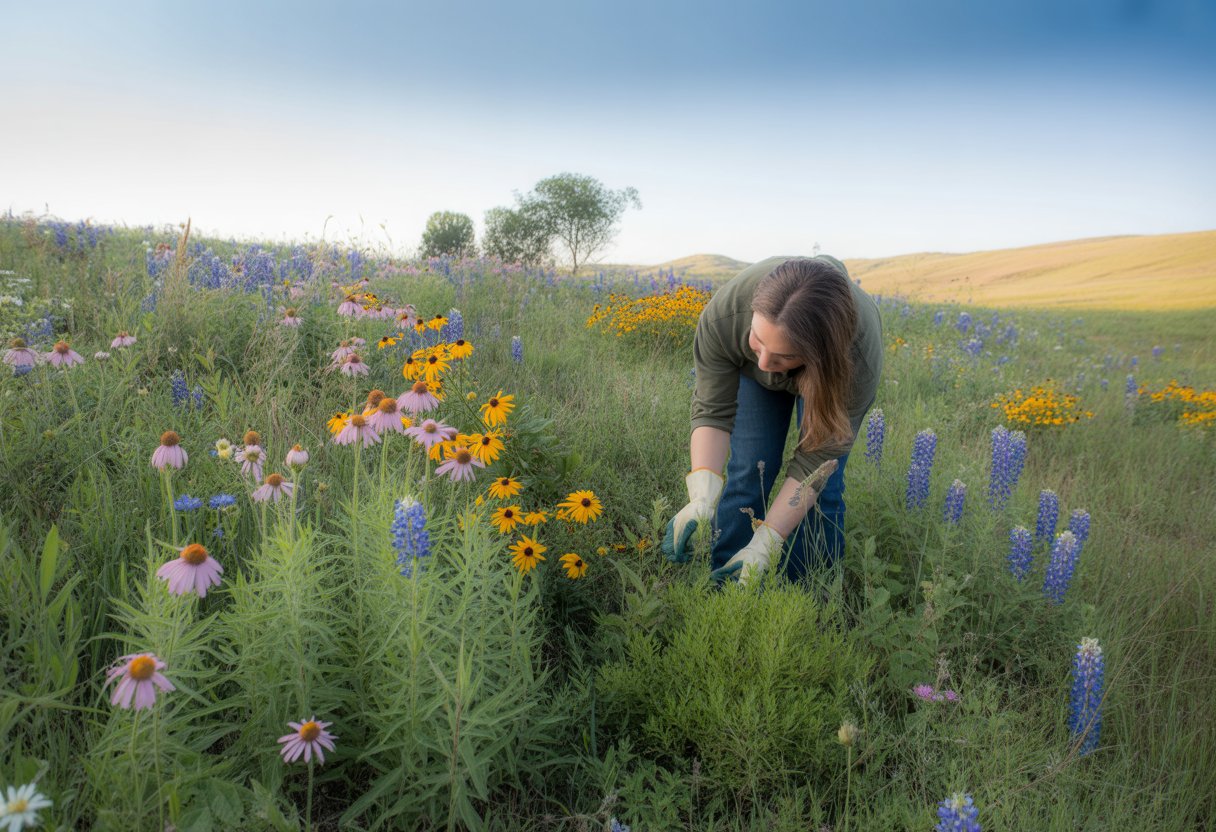
A bit of care keeps your meadow looking good and healthy. Water management and keeping invasives out are both key, especially if you want your native perennials to stick around.
Bringing in pollinators like bees and butterflies? That’s a big plus for biodiversity and makes the whole system tougher.
Irrigation and Weed Management Strategies
Once your wildflower meadow is established, you really don’t need to water much—native perennials are tough. In the first year, water deeply once or twice a week to help roots settle in. After that, cut way back to encourage drought resistance.
Weed control matters a lot. Mow or pull weeds in early spring before they take over. If you’re fighting something aggressive like bermudagrass, careful spot spraying with herbicide can help. Skip heavy fertilizing; wildflowers don’t want it, and you’ll just end up with more weeds.
Keep an eye on things so you can jump on weed problems before they get out of hand.
Promoting Biodiversity with Bees and Butterflies
A good wildflower meadow brings in all sorts of pollinators, especially bees and butterflies. Plant a bunch of different native perennials that bloom at different times, and you’ll have food for them all season.
Leave some undisturbed patches or brush piles for pollinators to shelter and overwinter. Avoid pesticides—they’re rough on the good bugs, too. If you include things like coneflower, milkweed, and black-eyed Susan, the meadow gets a lot more attractive to local wildlife.
Keep mixing things up in the meadow to keep diversity high. That way, pollinators stick around and the whole system stays healthy.
Expanding Wildflower Meadows Beyond Oklahoma
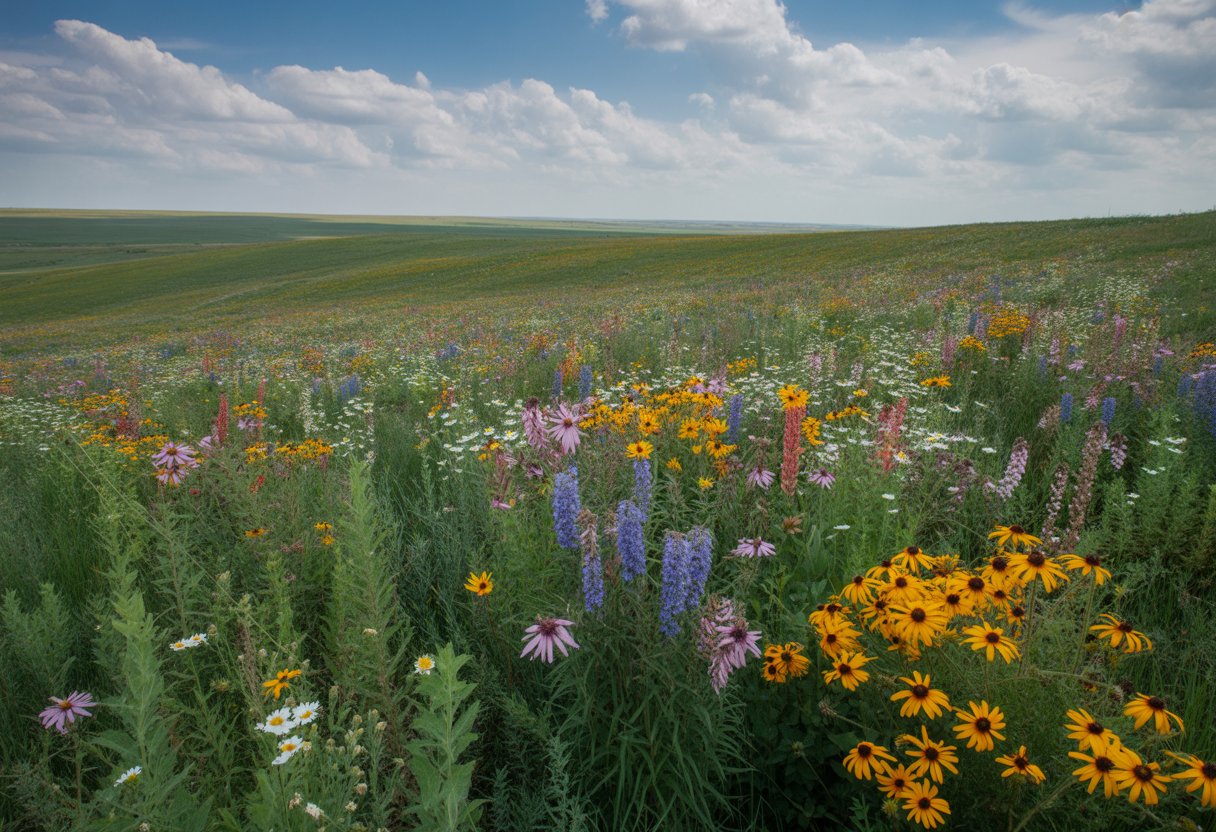
Wildflower meadows aren’t just an Oklahoma thing. They can thrive in all sorts of regions across the U.S., thanks to different climates and soils.
Each state has its own native species that fit right in, boosting biodiversity and making local ecosystems stronger.
Wildflower Meadows Across the United States
In California, wildflower meadows show off California poppies and lupines. These species handle the dry summers and Mediterranean climate pretty well.
Along the coast, native wildflowers help local pollinators. It’s a small thing, but it matters.
Florida meadows feature Black-Eyed Susan and Gaillardia. The warm, humid air gives them a real boost.
Sandy soils dominate in Florida, so drought-tolerant wildflowers do best. Otherwise, you’re just fighting a losing battle.
Midwestern states—like Indiana, Illinois, Minnesota, and Kansas—love prairie-style meadows. Purple Coneflower, Black-Eyed Susan, and Indian Grass pop up everywhere.
These species really fit the temperate climate and rich soils. It’s almost like they were made for it.
Out West, in Arizona, Colorado, Idaho, Montana, New Mexico, Utah, and Wyoming, wildflower meadows have to deal with high altitudes and dry air. Penstemon, Indian Paintbrush, and Lupine manage to thrive anyway.
You’ll find them in rocky or sandy ground, which honestly seems pretty tough.
New York and Tennessee meadows offer a blend of native wildflowers, like Milkweed and New England Aster. These plants do well along woodland edges and in temperate zones.
It’s a nice mix—not too flashy, but dependable.
And then there’s Texas. Wildflowers like Bluebonnet and Indian Paintbrush absolutely flourish here, especially in the prairies and open fields.
Rainfall can be unpredictable, but these wildflowers seem to roll with whatever comes their way.

